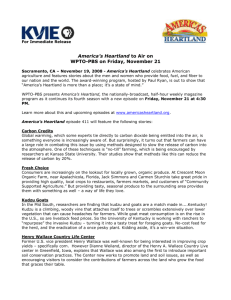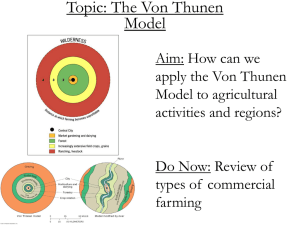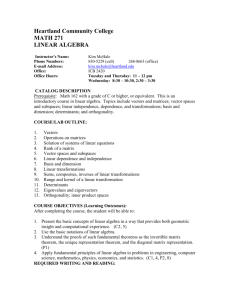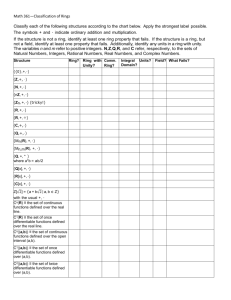Models & Theories Review (For Student Use Only – not intended for
advertisement
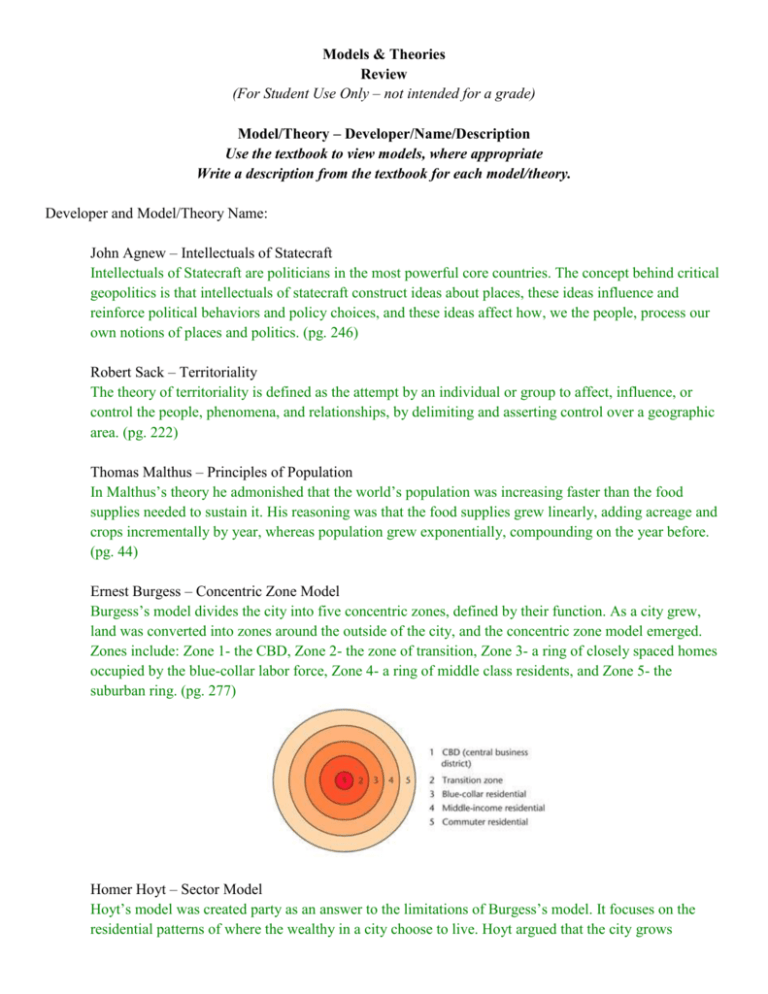
Models & Theories Review (For Student Use Only – not intended for a grade) Model/Theory – Developer/Name/Description Use the textbook to view models, where appropriate Write a description from the textbook for each model/theory. Developer and Model/Theory Name: John Agnew – Intellectuals of Statecraft Intellectuals of Statecraft are politicians in the most powerful core countries. The concept behind critical geopolitics is that intellectuals of statecraft construct ideas about places, these ideas influence and reinforce political behaviors and policy choices, and these ideas affect how, we the people, process our own notions of places and politics. (pg. 246) Robert Sack – Territoriality The theory of territoriality is defined as the attempt by an individual or group to affect, influence, or control the people, phenomena, and relationships, by delimiting and asserting control over a geographic area. (pg. 222) Thomas Malthus – Principles of Population In Malthus’s theory he admonished that the world’s population was increasing faster than the food supplies needed to sustain it. His reasoning was that the food supplies grew linearly, adding acreage and crops incrementally by year, whereas population grew exponentially, compounding on the year before. (pg. 44) Ernest Burgess – Concentric Zone Model Burgess’s model divides the city into five concentric zones, defined by their function. As a city grew, land was converted into zones around the outside of the city, and the concentric zone model emerged. Zones include: Zone 1- the CBD, Zone 2- the zone of transition, Zone 3- a ring of closely spaced homes occupied by the blue-collar labor force, Zone 4- a ring of middle class residents, and Zone 5- the suburban ring. (pg. 277) Homer Hoyt – Sector Model Hoyt’s model was created party as an answer to the limitations of Burgess’s model. It focuses on the residential patterns of where the wealthy in a city choose to live. Hoyt argued that the city grows outward from the center so a low rent area could extend all the way from the CBD to the city’s outer edge. This created pie shaped sectors that included: high rent residential, intermediate rent residential, low rent residential, education and recreation, transportation, industrial, and the core. (pg. 276) Chauncy Harris and Edward Ullman – Multiple-Nuclei Model Harris and Ulman believed that the other 2 models would never work for cities in the 21st Century, so they created the Multiple-Nuclei Model. The model recognizes that the CBD is losing its dominant position as the single nucleus in the urban area. (pg. 278) Johann Heinrich von Thunen – Von Thunen’s Model This model explains the location of agricultural activities in a commercial, profit making economy. The model shows 4 rings showing where each of the activities would be placed around a city. In the very middle is a small dot representing the central city, around that is the first ring- market gardening and dairying. The next ring is the forest ring, which is where the energy needed would be found. The 3rd ring is the increasingly extensive field crops and grains. The last and largest ring (4th) is ranging and livestock. Von Thunen figured that the more perishable the good (and the less room it needed) meant the closer it would be located to the central city. (p. 340 and glossary) Walter Christaller – Central Place Theory This theory is built of a set of assumptions. First the surface of an ideal region would have to be flat and have no physical barriers; second, soil fertility would have to be the same everywhere; third, population and purchasing power would be evenly distributed; next the region would have a uniform transportation network to permit travel from each settlement to the other; and last, from any given place, a good could be sold in all directions out to a certain distance. Christaller used hexagonal hinterlands when drawing out his model because they best met all his assumption and requirements. (pg. 274) P. O. Muller – Urban Realms Model Muller’s model found that suburban cities are ready to compete with the central city for leading urban economic activities such as telecommunications, high-tech industries, and corporate headquarters. In addition to expansion of residential zones, the process of suburbanization rapidly creates distinct urban regions complete with industrial, commercial, and educational components. (pg. 276) Immanuel Wallerstein – World-Systems Theory The World-Systems Theory is defined by 3 basic tenets. 1) The world economy has one market and one global division of labor, 2) although the world has multiple states, almost everything takes place within the world economy, 3) the world economy has a 3 tier structure: core, periphery, and semi-periphery. Walllerstein’s proponents of the WST view the world as much more than the sum total of the world’s states. (pg. 232) Walt Rostow – Modernization Model Rostow’s model assumes that all countries follow a similar path to development or modernization, advancing through five stages of development. The first stage is tradition- subsistence farming, the second is preconditions of takeoff- moving forward, the third is takeoff- experience an Industrial Revolution, the fourth is the drive to maturity- diffusion, and the 5th/final is high mass consumptionheight incomes, widespread production. (pg. 305) Sir Halford J. Mackinder – Heartland Theory The Heartland theory states that Europe (the Heartland) will eventually rule the world. Mackinder delivered the Heartland Theory as a warning of sorts: Who rules East Europe commands the Heartland Who rules the Heartland commands the World Island Who Rules the World Island commands the World Friedrich Ratzel – Organic Theory of Geopolitics Ratzel’s theory postulates that the state resembles a biological organism whose life cycle extends from birth, through maturity, and, ultimately, decline and death. The state requires nourishment, just as an organism needs food. Such nourishment is provided by the acquisition of territories belonging to less powerful competitors and by the people who live there. (pg. 245) Harold Hotelling – Locational Interdependency The Locational Independency model shows that the location of an industry cannot be understood without reference to the location of other industries of its kind. It poses the question of where 2 ice cream vendors might stand on a beach occupied by people distributed evenly along its stretch. (pg. 368) Alfred Weber – Least Cost Theory Weber’s least cost theory accounted for the location of a manufacturing plant in terms of the owner’s desire to minimize the categories of cost. The categories include transportation, labor, and agglomeration. (pg. 368) August Losch – Zone of Profitability Losch’s model was created to emphasize profit maximization. He worked to determine the locations manufacturing plants would choose to maximize profit. Losch added the spatial influence of consumer demand and production costs to his calculations. (pg. 369) Carl Sauer – Cultural Landscape Sauer argued that cultural landscapes are comprised of the forms superimposed on the physical landscape by human activity. Any cultural landscape has layers of imprints from years of human activity. (pg. 12) Great Britain (no known developer) – Demographic Transition Model The demographic transition model describes the sequence of population growth. The stages include: 1. Low Growth stage- high birth rate and death rate lead to a population that varies over time, with little long-term population growth. 2. High Growth Stage- high birth and declining death rates lead to sustained and significant population increase. 3. Moderate Growth Stage- declining birth rate combined with already low death rate lead to continuing population growth. 4. Low growth or stationary stage- low birth and death rate lead to low rate of growth. (pg. 51)
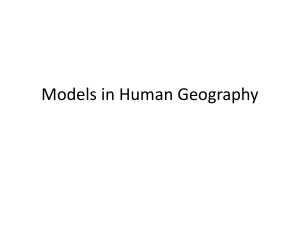
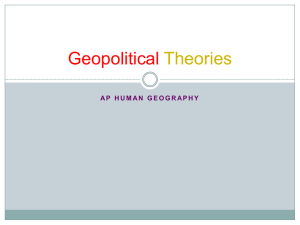

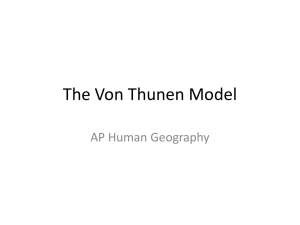
![Model_and_Theory_Chart[1]](http://s3.studylib.net/store/data/008565077_1-f7a3d3b1b3bb86c6e31ff39e95c26da5-300x300.png)



